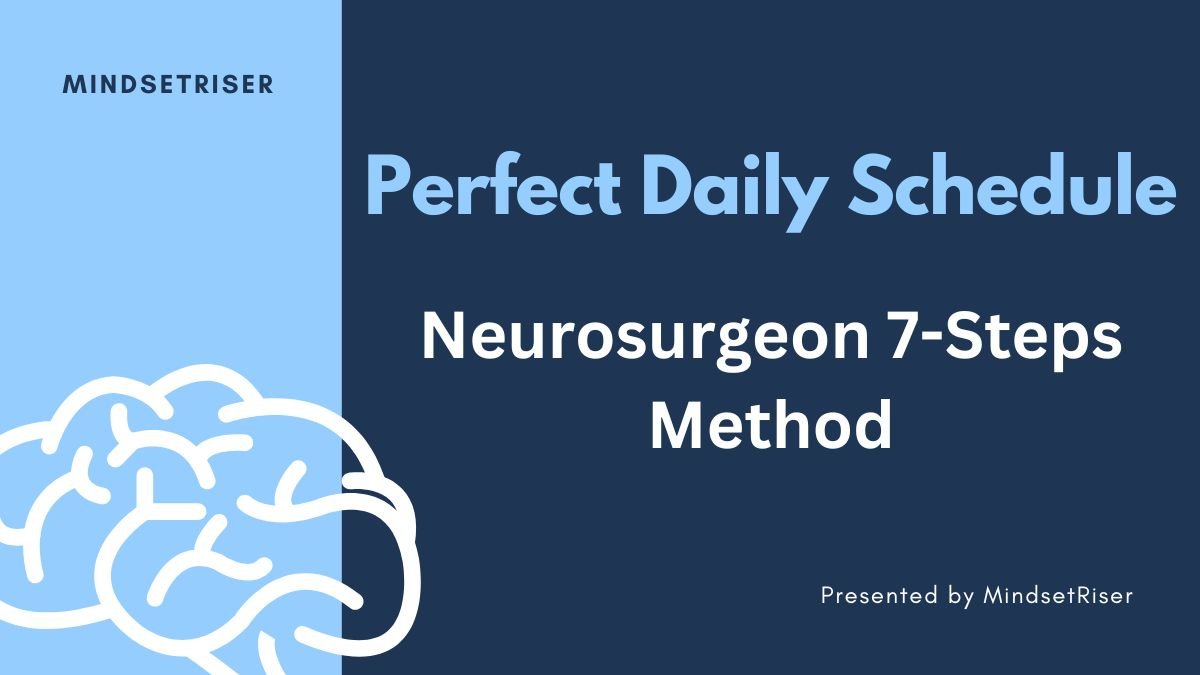How to Design Your Perfect Daily Schedule (Without Burning Out) — A Neurosurgeon’s 7-Step Method
The Myth of the “Perfect Schedule” (And Why You’re Failing)
Let’s bury the toxic fantasy: Your perfect schedule won’t look like Elon Musk’s, a monk’s, or that 23-year-old CEO’s TikTok.
Why? Because productivity porn ignores three brutal truths:
- Your brain has a unique circadian rhythm (night owls ≠ early birds).
- Willpower is a finite resource (not a moral virtue).
- Life is chaos (kids, bosses, and existential dread don’t care about your Google Calendar).
But here’s the good news: You can design a daily schedule that bends reality to your goals—without selling your soul to hustle culture. Here’s how.
Step 1: Audit Your Energy (Not Your Time)
Most people plan their day like this:
“9 AM: Work. 12 PM: Lunch. 1 PM: More work. 5 PM: Cry.”
Neurohackers plan like this:
“10 AM-12 PM: Creative work (peak focus).
12-1 PM: Meetings (low-energy tasks).
3-4 PM: Gym (post-lunch slump killer).
8-10 PM: Deep work (night owl mode).”
Your move:
- Track your energy for 3 days using a 1-10 scale every hour.
- Note when you’re focused, foggy, or fried.
- Plot your “power peaks” and schedule demanding tasks there.
Step 2: Time Block Like a Neurosurgeon (Not a Janitor)
Top surgeons don’t “check emails between surgeries.” They batch tasks by cognitive demand:
- Focus Blocks (90-120 mins): Deep work, writing, coding.
- Admin Blocks (30 mins): Emails, calls, TikTok doomscrolling.
- Recovery Blocks (15-30 mins): Walk, nap, stare at a wall.
Pro template:
Caption: A neurosurgeon’s schedule vs. the average person’s chaos.
Step 3: Weaponize “Time Buffers” (Because Sh*t Happens)
Most schedules fail because they ignore the 2nd Law of Productivity Thermodynamics: Every task expands to fill 25% more time than planned.
Fix it:
- Add 15-minute buffers between tasks.
- Block a “Chaos Hour” daily (e.g., 4-5 PM) for unexpected fires.
- Example:
- Planned: 1-2 PM → Write report.
- Reality: 1-1:50 PM → Write. 1:50-2 PM → Buffer.
Step 4: Hack Your “Weakest Hour” (Turn Dead Time Into Power Time)
Your “lazy” hour is a goldmine. Rebrand it:
- 3 PM Slump → “Walking meetings” or creative brainstorming.
- Post-dinner zombie mode → Learn a language via Duolingo (low stakes, high fun).
- Morning fog → Automate routines (e.g., pre-program coffee maker, outfit apps like Stylebook).
Case Study: A freelance writer (night owl) shifted client calls to her “brain-dead” slot (4-5 PM) and reclaimed 12 hours/week for high-value work.
Step 5: The “Non-Negotiable 5%” Rule (Guilt-Free Priorities)
Your schedule should include one daily non-negotiable that fuels you—not your to-do list. Examples:
- 20 mins of reading (not work-related).
- 10 mins of sun gazing (yes, it’s a biohack).
- 1 episode of The Office (dopamine reset).
Why it works: Sacrificing everything for productivity backfires. Joy = sustainable fuel.
Step 6: Optimize for “Done,” Not “Perfect”
Most schedules fail here:
“6 AM: Yoga. 7 AM: Journal. 8 AM: Learn Spanish…”
Reality: Misses yoga → Guilt-spiral → Abandons schedule.
Fix it:
- Use ranges, not rigid times:
- Bad: “6 AM: Morning routine.”
- Good: “6-7 AM: Move body (yoga/walk/stretch).”
- End each day with a “Victory Lap”: Write 3 things you did finish (not 10 you didn’t).
Step 7: Test, Tweak, and Betray Your Schedule
Your first draft will suck. Treat it like a science experiment:
- Week 1: Test the schedule.
- Week 2: Cut tasks that drain you.
- Week 3: Add ”flex days” (e.g., Fridays are structure-free).
Pro tip: Use apps like Sunsama or Motion to auto-adjust your calendar based on energy shifts.
The Controversial Truth: Busyness is a Drug
We over-schedule to avoid existential dread. But empty calendars create space for genius.
Elon Musk schedules 5-minute blocks. Einstein took 10-hour walks. Your turn: Delete one task today.

